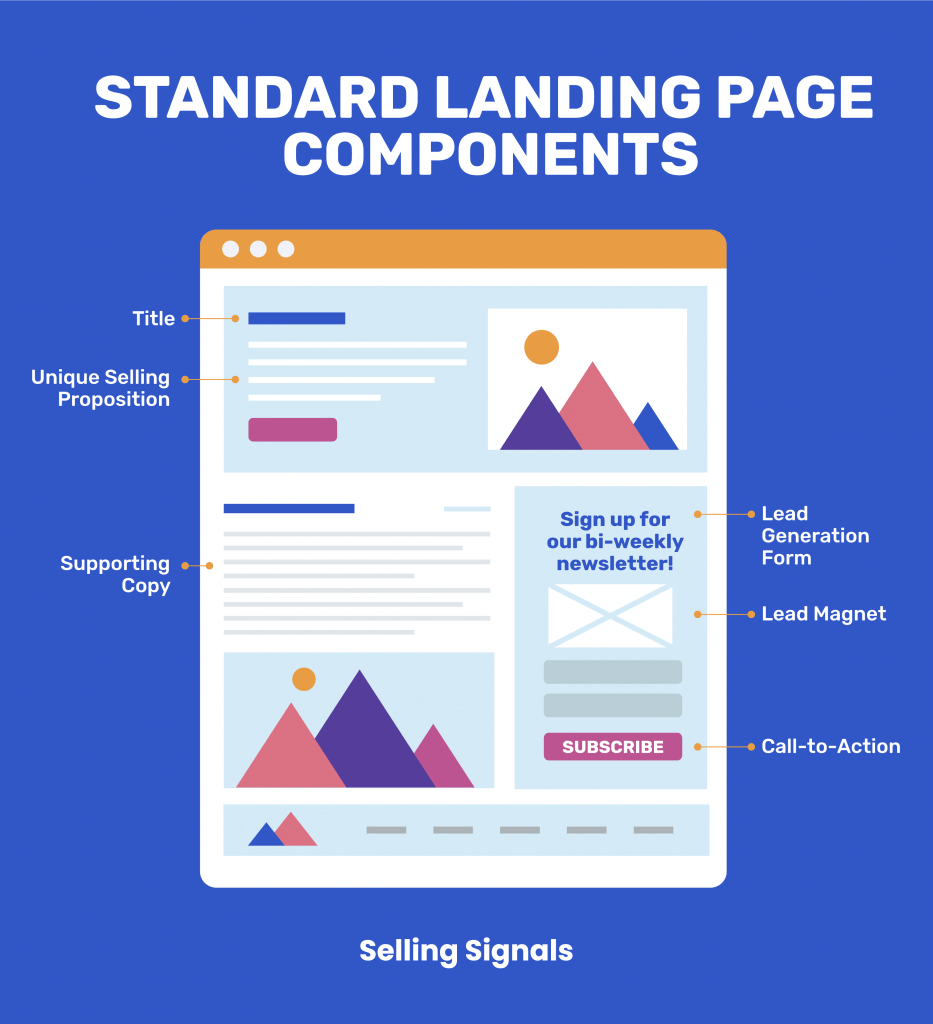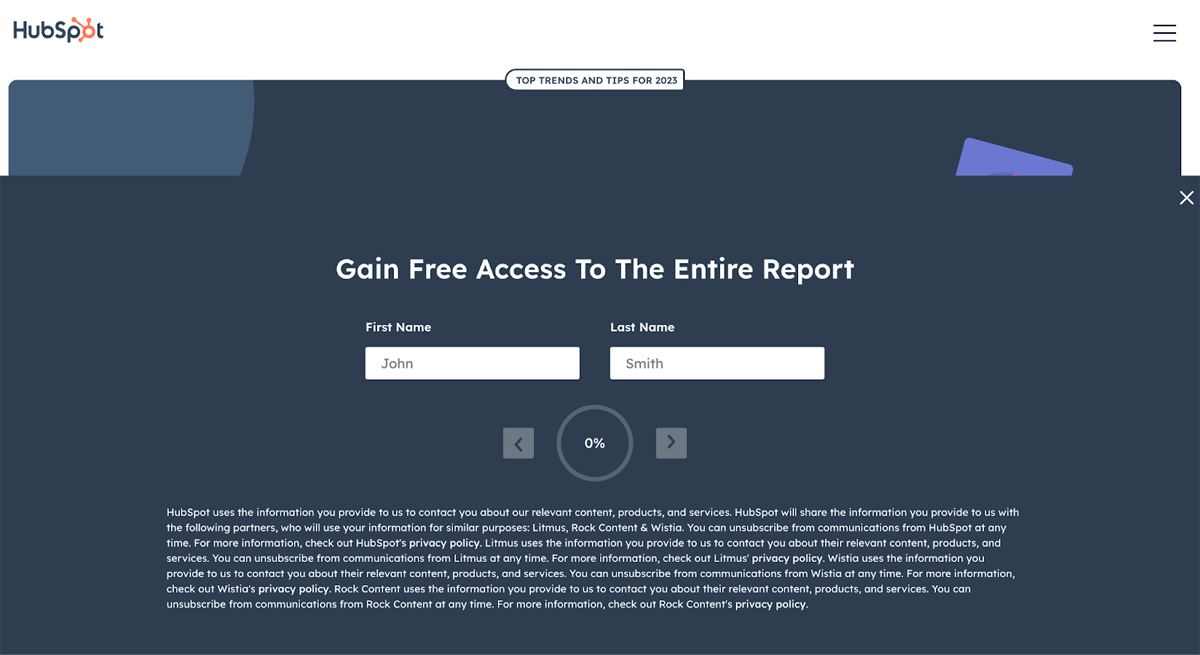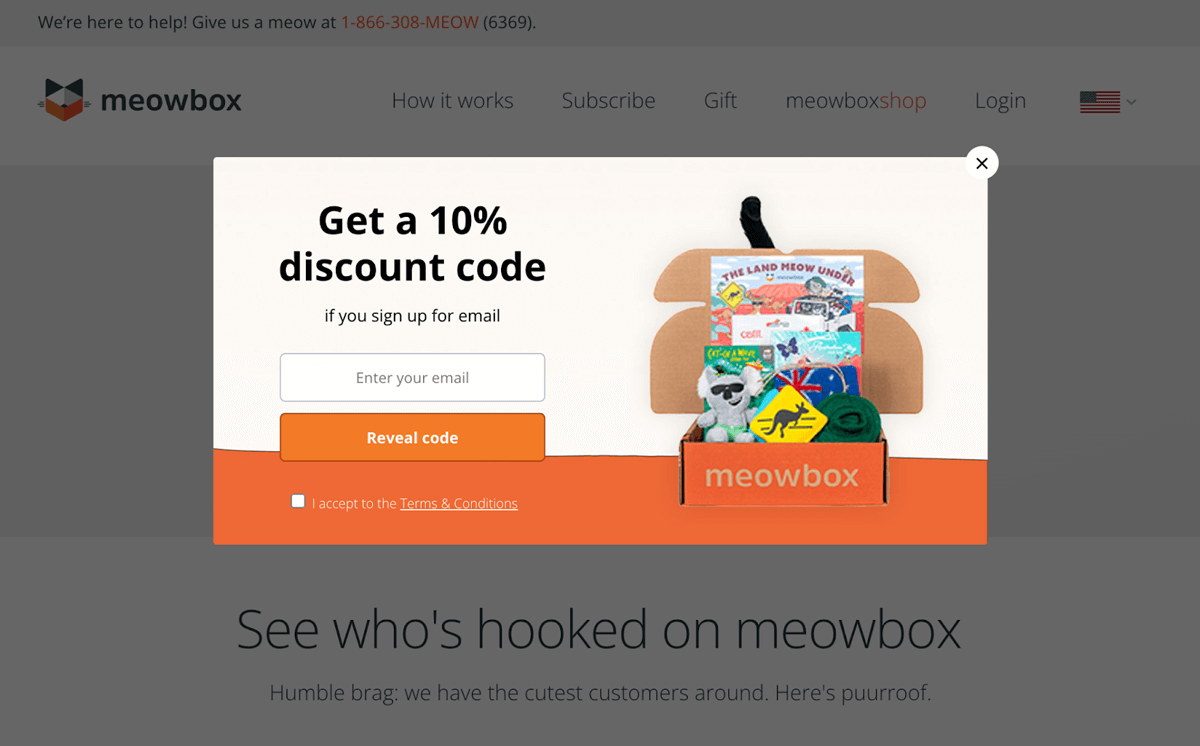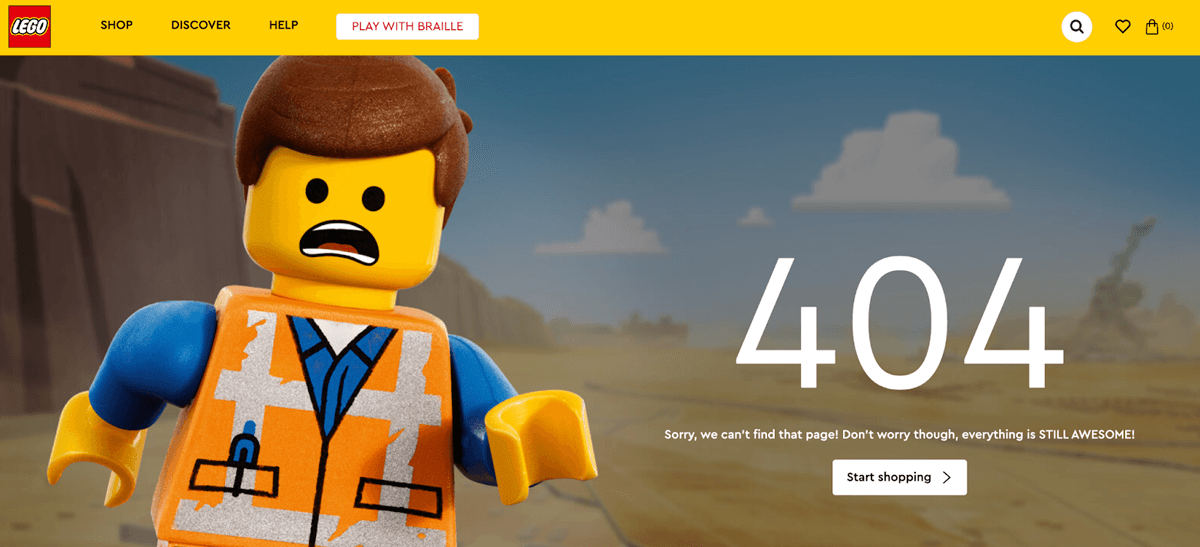-
News & Trends -
Sales -
Marketing Related Topics -
B2B Software Guides Related Topics -
Free Tools & Resources -
- About Us About Us


Landing pages are web pages that businesses create and upload as part of a brand’s marketing campaign to generate leads for sales reps. Visitors “land” on these pages after clicking on a link in their email, online promotion, or even social media. The goal of implementing these types of web pages on a business’ site is to identify and convert their visitors from leads into prospects by exchanging content or discounts for their contact information.
An effective landing page offers a lead magnet, or free asset or content, that your visitors find relevant and enticing enough to submit their information, which generates leads for your reps to further qualify and nurture. With a strong title, a unique selling proposition (USP), a lead generation form, call-to-action (CTA), and all the necessary supporting copy, standard landing pages are persuasive and straightforward so visitors willingly submit their email address.
Understanding your target audience and what they want is the first step to creating a successful landing page. From there, build your lead generation form, draft the page copy, and use a building tool to create the page itself. Once a page is live, drive traffic to it with inbound lead generation techniques and regularly evaluate the page. Whether visitors come across it organically or through a paid link, an effective landing page must have clear visuals and language.

Landing pages can live anywhere on a lead generation website. When the visitor interacts with it and submits their email address or contact information in exchange for your lead magnet, it shows a level of interest the lead has in your business or solution specifically. This acts as an indicator for a sales rep to nurture and convert the marketing lead into a prospect.
Since there are different types of landing pages, the components you find on any given landing page can vary. But even the most basic landing pages consist of a page title, a brief USP, a lead generation form with supporting copy, your lead magnet, and a final CTA. Together, these components can effectively persuade your visitor to submit the information you’re after.
A title or header acts as an introduction or guide for the entire landing page. It can be as simple as the page title itself, like About Us or Notifications. Or, it can be more of a directive for the lead magnet like “Download Our Industry Survey Report.” The style of title you choose is ultimately dependent on where your landing page lives and what you want your visitor to read first. The inclusion of your business name or logo will also help keep the page branded.
The combination of these components, with the addition of visual aids, all strengthen the effectiveness of a landing page. From the top title down to the CTA button, a well thought out landing page can help convert web page visitors into tangible leads.
To build an effective landing page, start by selecting and prioritizing the experience of your target audience. From there, build the individual components of the landing page, including the lead generation form and all copy. Once that’s well sketched out, use a landing page builder to import the copy and create the web page itself. When your landing page is live, drive traffic to the page and actively monitor the success of it.
Before attempting to build a landing page, work to understand your target audience and how or why they might want to engage with your brand to begin with. The best way to do this is with tangible data, research, and behavioral observations of your ideal buyers to build a holistic customer profile, which houses the averages of all of this hard data.
The most common categories and data points that create a customer profile are:
Begin brainstorming what style of landing page they’re most likely to engage with. With the help of the data-driven descriptors, it’s easier to conceptualize what lead magnet, copy, and CTA would resonate best and drive the results you’re after.
Check out our article on how to build a customer profile for a step-by-step guide, examples, and a list of the top software and tools to help.
The lead generation form is where your site visitor will directly engage with your page by typing in their information. Consider your target audience before jumping into building and uploading the form with a building software or tool. For example, visitors from social media might respond best to lead generation forms that only ask for their phone number because they’re likely on their mobile device and the number will be easy to type in.
Key steps in the lead generation form building process include:
It’s important to keep your brand’s voice consistent, even in a basic lead generation form. If your usual brand style includes witty catchphrases, include them in the form. Additionally, any form on your site should prioritize accessibility and user interface to ensure it’s intuitive and easily navigated for all visitors.
For a more detailed guide on building this type of web form, along with examples and a template, read our guide on lead generation forms.
Start writing your landing page copy from the top of the page and work your way down with the title, USP, and supporting copy. Draft and edit the copy for each component of your landing page. It’s also worth looping in your content team to help revise or copy edit your landing page.
Important copy to include on your landing page is:
Refer to your product positioning and overall brand strategy when writing your landing page copy. Your product positioning is the development strategy that your business uses to influence your target audience’s perception of your solution. Use similar language and tone from other marketing campaigns to ensure your brand identity and voice are consistent throughout the landing page.
When in doubt, stick to clear, concise, and simple language. If I ever get overwhelmed or experience “writer’s block,” I’ll include the bare minimum copy required to effectively convey the goal of the copy and then revisit it with fresh eyes to improve upon it.
Now it’s time to put the form and all drafted copy onto a web page to create the landing page itself. Instead of relying on complicated coding and backend development instructions, use a landing page building tool to create and upload landing pages to your site. This software can be used to launch a new landing page, or update an existing one with tools and insight to help get your page live quickly and efficiently.
Some core features a page builder can offer to help are:
Landing page building tools also offer integration functionality with third-party software like WordPress or WooCommerce. That way, the use of the tool goes beyond just providing building software but also uploading and monitoring capabilities.
If you want to see the top ranking landing page builders currently on the market, jump down in our article. There we cover three of the best software, including their core features and pricing.
Once you’ve built your landing page and uploaded it onto your site, it’s time to start driving traffic and visitors to the attached lead generation form. With the help of online lead generation tactics, the more visitors you get to the page, the better you’ll be able to see how your target audience resonates with the content, and the more leads you’ll ultimately generate.
Lead generation strategies to consider investing in to drive landing page traffic are:
Whether leads come across your landing page organically or through sponsored media, the more clicks you get, the easier it is to measure how the landing page resonates with your target audience. Even if leads choose not to submit their information, you can visualize what source they came from and where it might be worth allocating more budget to driving this traffic.
After having your landing page live on your website long enough to collect accurate data, evaluate it for its successes and potential areas of improvement. Use your landing page builder software to also monitor and track these metrics. Your sales CRM might also sync with your lead generation website to track important metrics like conversions.
Strategies to evaluate your landing page can include:
It’s best practice to schedule the evaluation of your landing pages on a rolling basis, typically through monthly, quarterly, or semi-annual check-ins. Involve all the appropriate teams and team leads in your evaluations and landing page reviews. Of course, if a problem presents, or a new branding style is rolled out across your business, the landing pages should be immediately remedied.
Following these steps will ensure you’re not only building a high-converting landing page based on data-backed strategy but the process itself is optimized and automated to its full potential.
Landing page builders design, create, and upload landing pages directly onto your website. Depending on the capabilities of your own design team, some building tools offer a range of functionality without the need for extensive coding knowledge. The ultimate goal of a landing page builder is to automate and simplify the design process of your page. The top landing page builders are HubSpot Marketing Hub, Leadpages, and Unhounce.
[fitlink slug="hubspot-marketing-hub-landing-pages"]HubSpot Marketing Hub[/fitlink] offers a landing page builder with a range of additional features for free. Along with its intuitive interface, you can create a page quickly with its drag-and-drop tool, template library, and custom content creation. Since it’s part of the HubSpot tech stack, it integrates seamlessly with HubSpot CRM. It has a free-for-life tier that includes your first 20 pages, while unlimited pages are available with the Starter tier priced at $45 per month.
An effective landing page builder should come with a stack of core features such as custom branding, template libraries, and third-party integrations. Along with generalized lead capture capabilities, the builder tool you select should enhance your designing and uploading process that ultimately saves you time and money.
For more information on these three software and other top scoring options, as well as their pricing tiers and ideal use cases, head over to our independent review of the top landing page builders.
There are multiple styles of landing pages that can exist on one website. Since they aim to get the visitor to take a specific action, like signing up for a newsletter, the page itself can live inside automatic pop-ups, click-triggered prompts, or stand alone pages. The most popular landing pages styles you can find on any website are lead capture pages, squeeze pages, and error 404 pages.

Lead capture landing pages are typically pop-up or click-triggered pages that act as a gatekeeper of intellectual property, content, or discounts that your visitor might be interested in. They ask the visitor to submit contact information like email address, phone number, or even job information in exchange for the downloadable content, in addition to being added to their mailing list.

Similar to lead capture landing pages, squeeze pages also target information in exchange for a discount. Squeeze pages specifically source the email addresses of visitors to add them to their email marketing lists. These landing pages are typically pop ups and are designed with visual components that present an enticing discount or limited access that the lead doesn’t mind submitting their email for.

Error 404 pages are only accessed when a visitor clicks on a link or website component that leads to an expired or crashed page. Typically dead ends, these pages can be frustrating for visitors to come across, so utilizing them as landing pages can add value where there wasn’t any before. The use of funny and appropriate language and a strong CTA can help get your visitor back onto a healthy page.
Referencing landing page examples is crucial to building your own successful page. Consider researching the websites of companies in your industry to see where and if they utilize landing pages and what language they use.
Check out our article for more landing page examples. There you’ll also find a synopsis of each example style along with split testing ideas.
Building an effective landing page for your website can create a steady stream of leads for reps to begin qualifying and nurturing. With the correct approach that prioritizes your customers and their experience, along with the right tools, creating a high-converting landing page can be simple. Now that you have the insight to optimize your landing page, read our article on lead generation forms to learn how to design and create captivating forms.


Allyssa is a sales writer with a background in B2B sales and account management. After earning her degree in English and communications, she spent her selling career supporting Fortune 1000 IT and finance companies including Bank of America, Wells Fargo, and Credit Karma. As a staff writer for Selling Signals, her specialties include lead nurturing, lead generation, and sales software topics. When she's not writing or updating articles, you can find Allyssa writing poetry, traveling, or picking up any new creative hobby.

Selling Signals delivers actionable advice for sales and marketing professionals. Learn strategies that help you hit targets, strengthen customer relationships, and win more business. Get expert advice on lead generation, sales processes, CRM software, sales management, and account management directly to your inbox.
Property of TechnologyAdvice. © 2026 TechnologyAdvice. All Rights Reserved
Advertiser Disclosure: Some of the products that appear on this site are from companies from which TechnologyAdvice receives compensation. This compensation may impact how and where products appear on this site including, for example, the order in which they appear. TechnologyAdvice does not include all companies or all types of products available in the marketplace.